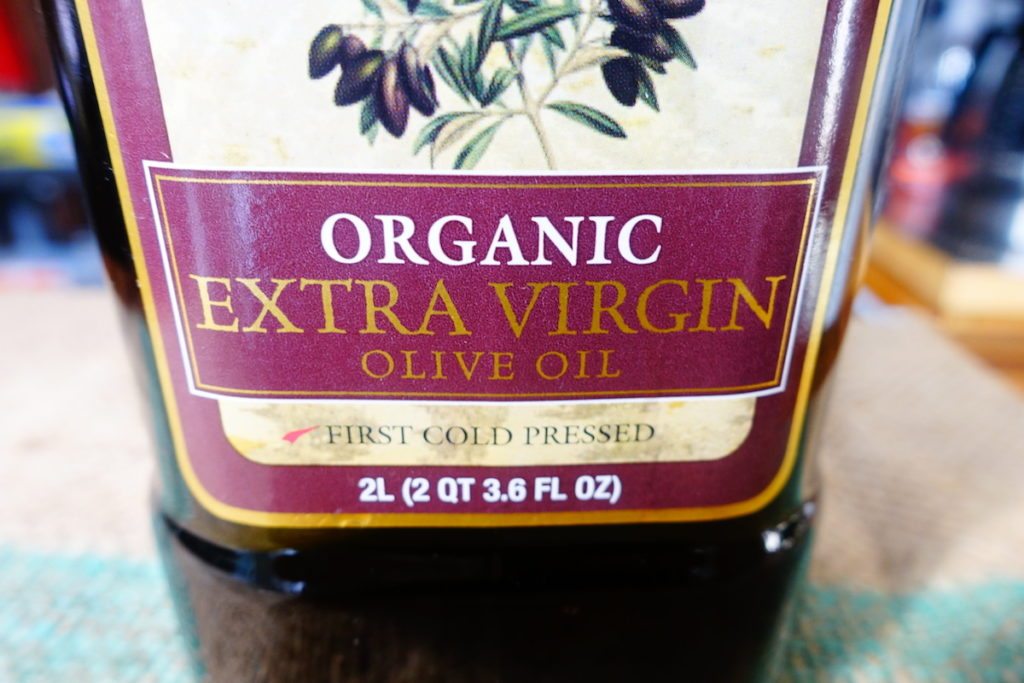How did we get here?
With excellent feedback from our #anovafoodnerd family plus further research, we are now able to present the latest and most complete version for you to save and/or print.Cooking Oil Smoke Point Chart

On the Subject of Cold-Pressed Oils
The oil smoke points chart is helpful, but "cold-pressed" is something you'll see on a number of different cooking oil labels. The sources, or oilseeds, are not precooked and so the only heat exposure experienced is through friction. The temperature to which the cooking oil sources can be exposed during cold-pressing is absolutely limited to 120ºF/49ºC, NEVER above. And this is why cold-pressed oils, which are also associated with the terms "raw", "virgin", and "extra virgin" (which is designated only to oils extracted from the first pressing), have more flavor and greater nutritional value.
That said, they can also be trickier to cook with as they tend to have lower smoke points, which leads them to degrade more quickly when exposed to heat. This is especially true of unsaturated (read: liquid at room temperature) cooking oils. You absolutely CAN still cook with them, but you must be very conscious of the heat of your cooking vessel. Once the oil smokes, the degradation has begun, as well as the creation of potentially harmful compounds.
Unrefined...
Unrefined oils are also all cold-pressed oils that have not been chemically treated, deodorized, or bleached after extraction. We did not include a number of unrefined cooking oils on our chart because some of them are simply not designed for cooking. Unrefined oils taste like the fruit or seed they were extracted from.
Also, as mentioned in the last section, they have a greater nutritional profile since they have not been exposed to either high levels of heat or processing. Unrefined oils are the preferred choice for salad dressings or ultra-low-heat warming to maintain their integrity.
vs Refined?
Refined oils, on the other hand, HAVE been additionally processed and tend to be much more suitable for cooking. Their smoke points are raised by:- removal of larger particles (filtering)
- expulsion of free fatty acids, proteins, phospholipids, and pigments (neutralization)
- elimination of unappealing odors or tastes (deodorization), and more

Because of the multiple steps of purification, the cooking oil becomes more homogenous and less likely to contain components that would experience the chemical reaction of burning at lower temperatures. Hence, a greater smoke point is achieved.
Which Oils Are the "Healthiest" for Cooking?
This is a highly debatable yet frequently asked question, because the health benefits of any cooking oil are highly reliant on how that oil will be used. In the spirit of the topic that led to this blog post, high-heat searing, I can say that the healthiest oil to use is the one that you do not burn. When an oil surpasses its smoke point, harmful fumes and free radicals are released as the oil starts to decompose. Disintegration of the cooking oil in this manner effects not only the nutritional value and flavor of the food you are cooking, but also creates carcinogenic compounds that can be harmful if inhaled or consumed. My personal favorite is avocado oil. With a smoke point of 500 - 520ºF/260 - 271ºC, this neutral flavored oil is more difficult to burn, but still delicate enough to use for something uncooked, like salad dressing. It has been shown to:- be highly antioxidant
- enhance the absorption of fat-soluble vitamins and minerals
- supply beneficial amounts of lutein (which is integral for vision health and may reduce the chances of cataracts and macular degeneration)
- have positive effects on both cholesterol levels and heart health
- provide a healthy supply of oleic acid, a monounsaturated omega-9 fatty acid (MUFA) which is considered to be the source of all of the much-heralded health benefits of olive oil. How great is that?
Slip Sliding Away
This is likely not to be the last time we visit this important – and delicious – topic of cooking oils. With the constant evolution of cuisine, there is always more to learn. As long as we're experimenting, we'll be sharing - and hope you do the same, #anovafoodnerd fam!
Note: this post was updated on August 30, 2023.


2 comments
Algae cooking oil now holds the throne for the highest smoke point (up to 535 F).
I’d like to copy your brilliant chart. Do you have it any other file form besides an image? Thanks Rob